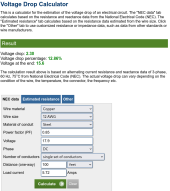Hi all
I am starting to get everything setup for my off grid setup, but would just like some help if possible.
I will be having 2 arrays with 12 x 390w panels connected to a Fronius 8.2 primo. these will be wired in series but due to some shade issues that have come into play since the setups inception on the site some of the panels that make up the array will now have to be spread out.
The panels will be on frames that hold 3 panels, some are right next to each other but some will be 5-6 metres away from the next in the array. is this likely to cause problems ? I know if they were in parallel the wires between panels should ideally be the same length but not sure it is so critical in series.
Any advice greatly appreciated.
I am starting to get everything setup for my off grid setup, but would just like some help if possible.
I will be having 2 arrays with 12 x 390w panels connected to a Fronius 8.2 primo. these will be wired in series but due to some shade issues that have come into play since the setups inception on the site some of the panels that make up the array will now have to be spread out.
The panels will be on frames that hold 3 panels, some are right next to each other but some will be 5-6 metres away from the next in the array. is this likely to cause problems ? I know if they were in parallel the wires between panels should ideally be the same length but not sure it is so critical in series.
Any advice greatly appreciated.



